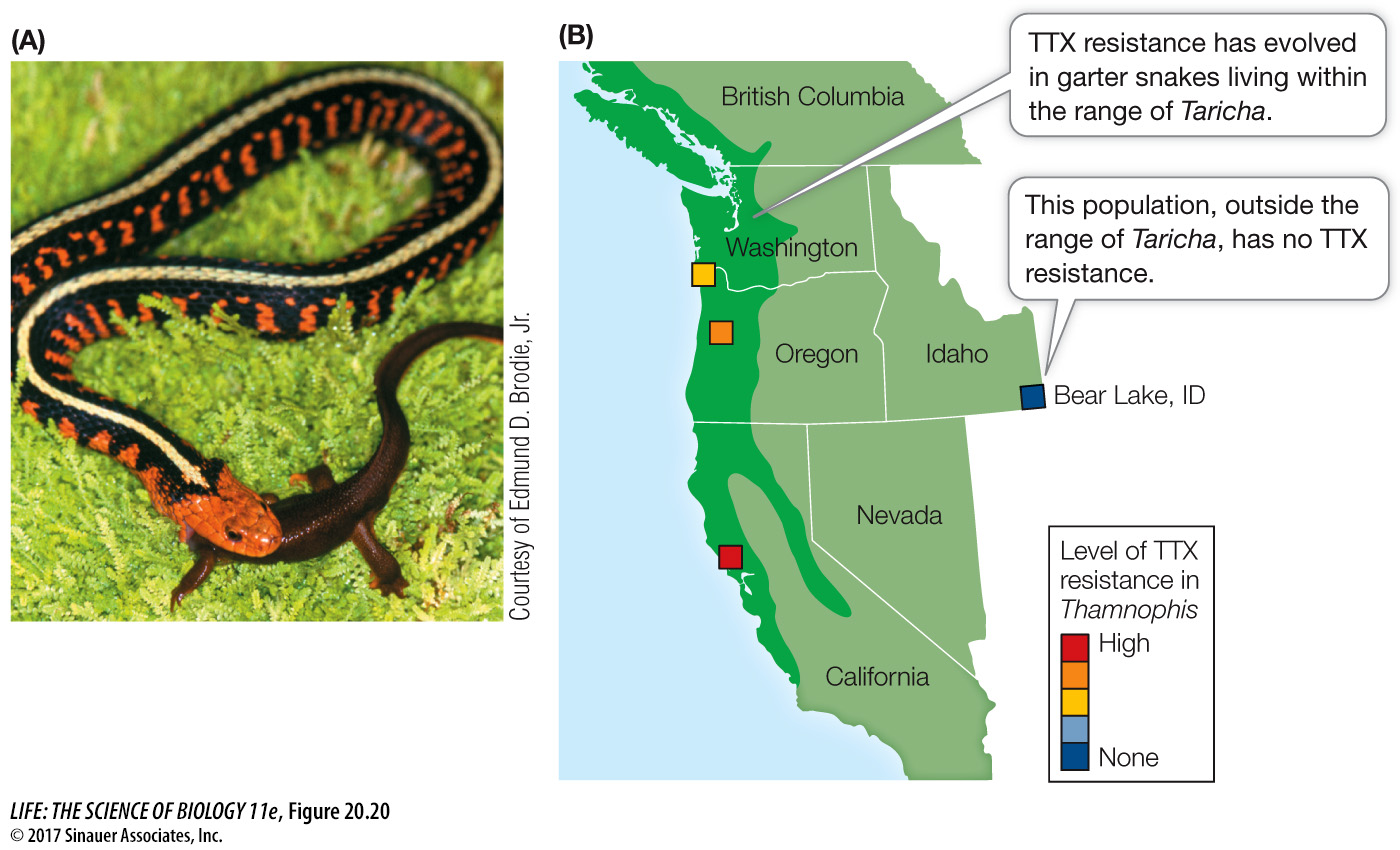Trade-offs constrain evolution
Adaptations frequently impose both costs and benefits. For an adaptation to be favored, the fitness benefits it confers must exceed the fitness costs it imposes—in other words, the trade-off must be worthwhile. For example, there are metabolic costs associated with developing and maintaining certain conspicuous features (such as antlers or horns) that males use to compete with other males for access to females. The fact that these features are common in many species suggests that the benefits derived from possessing them must outweigh the costs.
As a result of trade-offs, many traits that are adaptive in one context may be maladaptive in another. Consider the rough-skinned newt and one of its predators, the common garter snake (Figure 20.20A). The newt sequesters a potent neurotoxin called tetrodotoxin (TTX) in its skin. TTX paralyzes nerves and muscles by blocking sodium channels (see Key Concept 44.3). Most vertebrates—including many garter snakes—will die if they eat a rough-skinned newt. But some garter snakes can eat rough-skinned newts and survive: TTX-resistant sodium channels have evolved in the nerves and muscles of such individuals. However, for several hours after eating a newt, TTX-resistant snakes can move only slowly, and they never move as fast as nonresistant snakes. Resistant snakes are thus more vulnerable to their own predators than are TTX-sensitive snakes. This vulnerability leads to selection against TTX-resistant sodium channels in garter snake populations that occur outside the range of rough-skinned newts, even though there is selection for TTX resistance in many areas where newts are present (Figure 20.20B).

Figure 20.20 Resistance to a Toxin Comes at a Cost (A) Garter snakes (Thamnophis sirtalis) prey on rough-skinned newts (Taricha granulosa). Rough-skinned newts defend themselves by sequestering a neurotoxin, TTX, in their skin. In turn, TTX-resistant sodium channels have evolved in some snake populations, allowing the snakes to eat toxic newts but resulting in slower movement by the snakes. (B) High TTX resistance in garter snakes is found only in regions where snake and newt populations overlap (tan area).
Question
Q: Why doesn’t TTX resistance spread throughout the range of the garter snake?
Although TTX resistance is an advantage within the range of the toxic newt, the alleles that confer TTX resistance also lead to slower movement by the snakes (a disadvantage). There is therefore a trade-off in the benefits versus the cost of TTX resistance. In the range of the newt, the advantage outweighs the cost; outside the range of the newt, the cost outweighs the benefit. Thus there is selection for TTX resistance where the snakes occur with the newt, but selection against TTX resistance elsewhere.
Animation 20.2 Assessing the Costs of Adaptation
